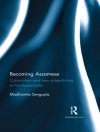This book aims to sketch the diversities of South Asian social History, focusing on Orissa. It highlights the problems of colonialism and its impact upon the lives of the colonised, even as it details the manner in which the internal order of exploitation worked. Based on archival and rare, hitherto untapped sources, including oral evidence, it brings to life diverse aspects of Orissa’s social history, including the environment; health and medicine; conversion (in Hinduism); popular movements; social history of some princely states; and the intricate connections between the marginal social groups and Indian nationalism. It also focuses on decolonisation, and explores the face of patriarchy and gender-related violence in post-colonial Orissa.
This volume will be of interest to students of history, social anthropology, political sociology and cultural studies, as well as those associated with non-governmental organisations and planners of public policy.
Inhaltsverzeichnis
Preface
1. Introduction
2. Environment and social history: Kalahandi, c.1800–1950
3. Hegemony, shifting identities and conversions
4. Negotiating Dharma Pinnu: Towards a social history of smallpox in colonial Orissa
5. ‘Religion’ and social ‘subversion’: Re-examining popular movements
6. Interrogating stereotypes: Exploring the Orissan Princely States
7. Storm over Malkangiri: Laxman Naiko’s Revolt, 1942
8. Orissa and the making of the Nehruvian Nation State, 1946–52
9. ‘Living’ with dowry: Oral testimonies of gender oppression
Select bibliography
Index
Über den Autor
Biswamoy Pati is Associate Professor in Modern Indian History at the University of Delhi












